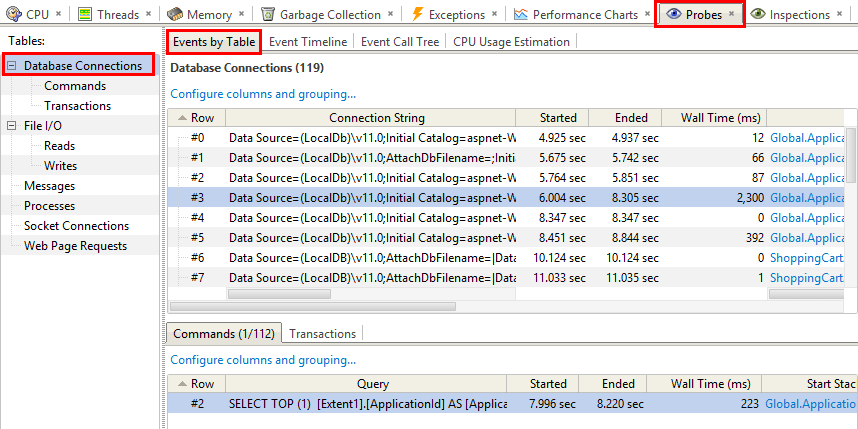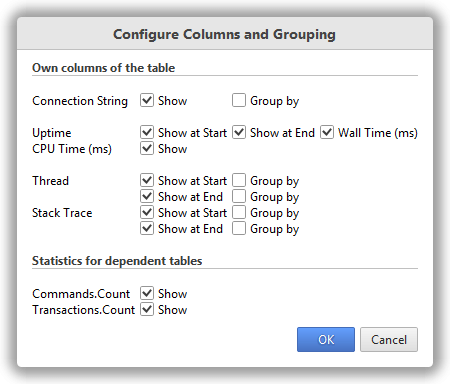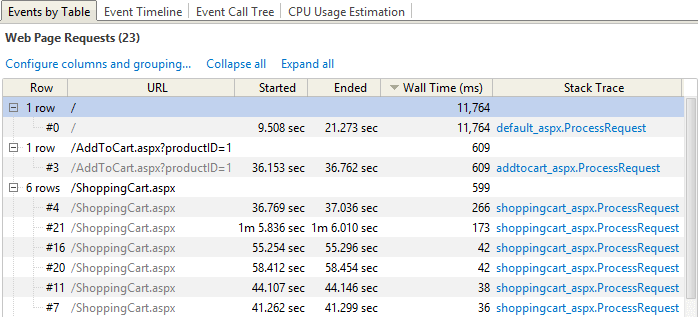- System requirements
- Profiler architecture
- Profiler installation
- Uninstall profiler
- Running the profiler
- Profiler activation
- Welcome screen
- Start profiling
- Profiling overhead
- Snapshots
- Solving performance problems
- CPU profiling
- Thread profiling
- Object allocation profiling
- Memory profiling
- Exception profiling
- Telemetry
- Probes: monitor higher level events
- Inspections: automatic recognition of typical problems
- Automatically trigger actions on event
- Automatic deobfuscation
- Summary, automatic deobfuscation
- Filters
- Profiler command line
- Command line tool to control profiling
- Export of profiling results to external formats
- Profiler .NET API
- Profiler HTTP API
- Settings
- Troubleshooting
Event table
This view shows events in a particular table. If the table has dependent tables, they are presented as dependent views:

Number of events in table is shown in the title.
Table columns. Grouping and visibility.
Events can be presented as a plain list, as well as grouped by arbitrary column(s).
For each group you can see sum, minimum and maximum values for numeric columns.
In addition to own table columns, you can also get statistics on associated rows of dependent columns: the number of the rows, as well as sum, minimum and maximum values of the dependent table's metrics.
Also, you can hide columns to give more space for others.
All this can be configured via "Configure columns and groping" action:



Navigation between views
To open selected event(s) in another view, use corresponding popup menu items. Read more...
